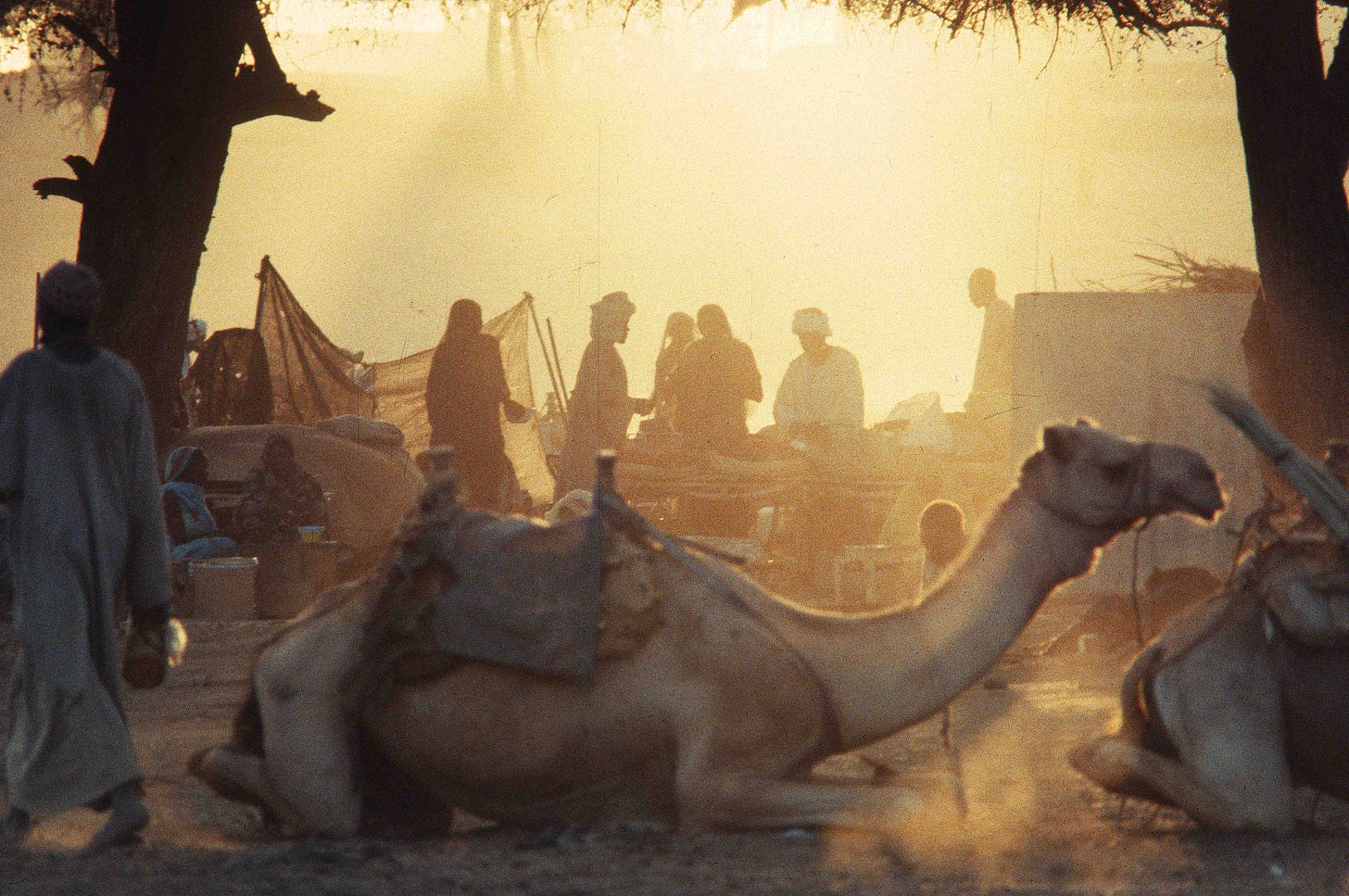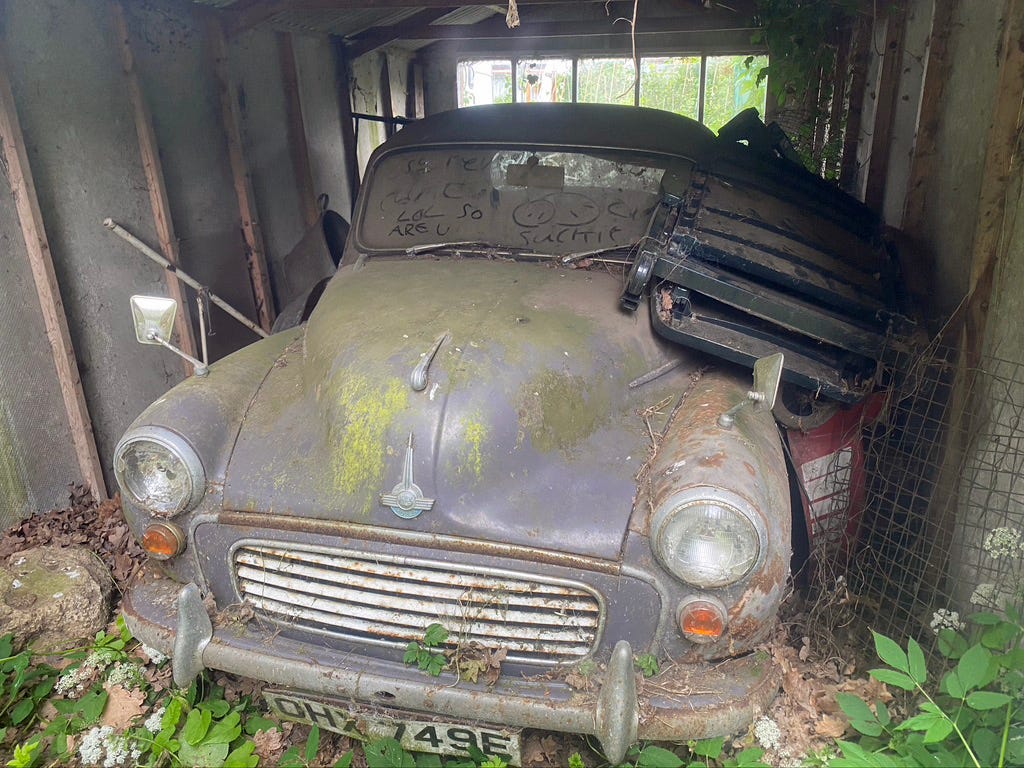Conrad's comment on last week's story made me think. "I love that you always have accompanying images."
In the beginning I borrowed my Dad's Mamiya 35mm SLR and set out, without any particular conscious plan, photographing what was in front of me, or so I thought. In fact, the limitations of film and money meant that each shot had to be chosen. There was no machine-gunning of a subject, each frame had to be leveraged along with a thumb before the next one was lined up, a slow process. Neither was there any possibility of altering a colour transparency afterwards. And that choosing of subjects necessarily drew on all the attitudes, aspirations and prejudices that the 1960s and 70s had managed to bury inside of me.
I cropped out telephone lines, television aerials and cars. Most of the time I avoided people who looked like me: Westerners in Western clothes. I wanted beauty and beauty was definitely not Western, or modern. In my world the horse and cart always beat the Ferrari; tribal dress licked Levis, and a thatched cottage trumped the tiled. Even now, show me a street of lovely ancient architecture and I feel the urge to remove the parked cars. Not that I am quite the perfect man for The National Trust, Britain's custodian of heritage buildings. I still want to climb an ivy-covered wall and find an old house in ruins, the dust gathering on the last supper that the occupants left behind. I definitely don't want a cafe and visitor signboard telling me everything. I want mystery and I want to be first on the scene.
And yet, sifting through all my old photos, what catches my eye is the stuff that has changed. I realise that I might have done better to photograph the cars and edit out the old buildings. It's change that is interesting. Why haven't I got any pics of people using Fax machines? My parents driving their Morris Minor? The 18-year-old me playing Space Invaders in The Hussars? (The video game is gone and so is the pub). I missed so much with my unconscious editing.
In my twenties and thirties I spent a lot of time trying to reach remote, untouched locations where the people lived traditional lives. Hence my bicycle journeys across what was then the Sudanese border into what was then Zaïre. And that was remote. Arriving in one village with a Sudanese friend, Bullen, we found it deserted. Under the grain store, a fire smouldered and Bullen sat down.
"Where are the people?" I asked.
"They saw you coming and ran," he laughed, "They think you are the Devil."
And then he uttered the ultimate seal of approval. "They have never seen a white man before."
That was it. That was all I needed. The line goes down with a clunk these days, but at the time it meant I had escaped. Ironically I had not seen a white person for some months and had long since given up noticing that glaring difference between myself and the people around me. In the market at Nyanza one Sunday morning I had even gone up to a man I recognised. It was David from school. What on earth was he doing here? What on earth was a Nottingham schoolboy doing selling peanuts in south Sudan? I reached out and touched his hand. He turned. Suddenly I realised my mistake and muttered some apology. I had remembered only at the last moment: David was a white Englishman; the peanut seller was a black Azande tribesman. Apart from the skin tone, they were like peas in a pod. I forgot, of course, to take out the camera.

Back in the Zaïrean village was one of the giant talking drums that the Azande tribe used. Hollowed from a single tree, it required the musician to climb on top and sit on it, banging the sides which were sculpted to create two notes. Bullen climbed up and started beating. He was telling the people to come out the bush and meet his friend, who was not Satan.
They came, eventually, cautiously. Then when they saw I was harmless, they forgot their fear and claimed they had simply gone to collect vegetables in their gardens. Bullen chuckled. It was all very memorable and throughout the entire episode I forgot to take any pictures.
In those days I wanted to escape the modern world, but forgot that the modern would itself would soon be archaic. Where the photographs work, I reckon, is in capturing moments of beauty and grace in a disappearing world. Like the five-year old boy I came across in Kyrgyzstan, herding his sheep with fabulous confidence from the back of his fearless donkey.
The dream for me was to come across lost places. As a boy I'd get the World Atlas down and trace routes up the Amazon and Orinoco. My Dad bought an encyclopaedia from a door-to-door salesman and I scoured the six volumes for information on unexplored parts of the world. There was a section that claimed the only unexplored areas left on our planet were in the Tibesti Mountains, Irian Jaya, Greenland's interior and parts of the Amazon basin. I still haven't managed to get to any of them, but I have discovered that the encyclopaedia was wrong. The unexplored is all around.
In 1993 Tim Mackintosh Smith and I sailed to the island of Socotra on a dhow that we tracked down in southern Yemen. (Tim wrote a memorable account of this in his book Travels in Dictionary Land). I took a lot of photographs: the Dragon's Blood trees, the traditional stone houses, and the incredible landscapes, but the images that stay in my head are the photographs that I didn't take. We had trekked across that epic mountainous island and reached the main town, Hadibu. Our boots were in tatters, we were covered in bites and bruises, and we were desperate to taste anything that had never been near a goat.
There was only a dilapidated government resthouse to stay in, with one other guest, a lonely civil servant who claimed to be a 'delegation'. What we thought might be the sound of an air conditioner turned out to be swarms of mosquitoes. The town market was a row of stone huts with tin roofs selling soap, rice and candles. Craving some kind of luxury, we ransacked every shop and, eventually, found a single can of Coke.
Now a small crowd of boys began to gather. It seemed as though this can of sweetened fizzy pop was a something of a celebrity, having sat on a shelf for a long time and never encountered anyone with sufficient cash to buy it. In showing our joy at seeing it, handing over some cash and opening it, we were confirming every suspicion that these boys had: that the outside world was superior; that Coke was desirable, and that Coke was the real thing. I should have got my camera out. I should have recorded that moment when we pulled the ring and released the demons. But I did not, I was too busy taking a long deep slug of gloopy Western decadence. Tim did likewise. Then we gave the remaining liquid to the crowd of boys to fight over.
Coke is the single most visible worldwide symbol of a western lifestyle and as such, in the old days, I would have edited it out, like a TV aerial. Then in Africa I'd see Coke cans made into toys, lamps and jewellery and I started to change my mind.
In Kenya in 2018 I produced a television documentary about Masai herders who were opening bank accounts, a necessary step in joining a tourism project. Their land would be used by safari companies who would pay a fee for each visitor. The wildlife gained because the herders would not sell out to flower farmers, instead keeping their land wild and fit for lions and elephants.
We took one Masai, Joshua, to open his bank account, little realising until we reached the town that he had never previously never been out of the bush. "Oh my Lord," he said as we drove into town past a couple of trucks and a handful of Land Cruisers. "Are there so many cars in this world?"
In the market we handed him a bottle of Coke and he screamed at the foaming, fizzing taste. "It has gone right up my nose!" Then, setting the bottle down, added the final comment on the drink. "Why are you people liking this horrible stuff."










Hi Kevin. You have a brilliant writing style that makes my travelling experiences seem superficial and touristy compared to the authenticness of your travels. You inspire me to change the way I travel. Your photography is complementary to the stories. I've also travelled through Sudan but never got close to your camel photo. Just stunning. Keep up the stories - you are doing all the countries in my bucket list .
A wonderful read as always, making me reconsider if my finely posed portraits and mundane landscapes are really worth the effort...
A point to the article: I Googled “Azande talking drum” and saw nothing like what you described, nor anything resembling the photo of the carving. Lost to history?
You mentioned getting your first break as a sort of stand-in mistaken photojournalist. I take it you always travelled with a camera. Was the photography a crucial part of your career as a journalist or could you have done without?